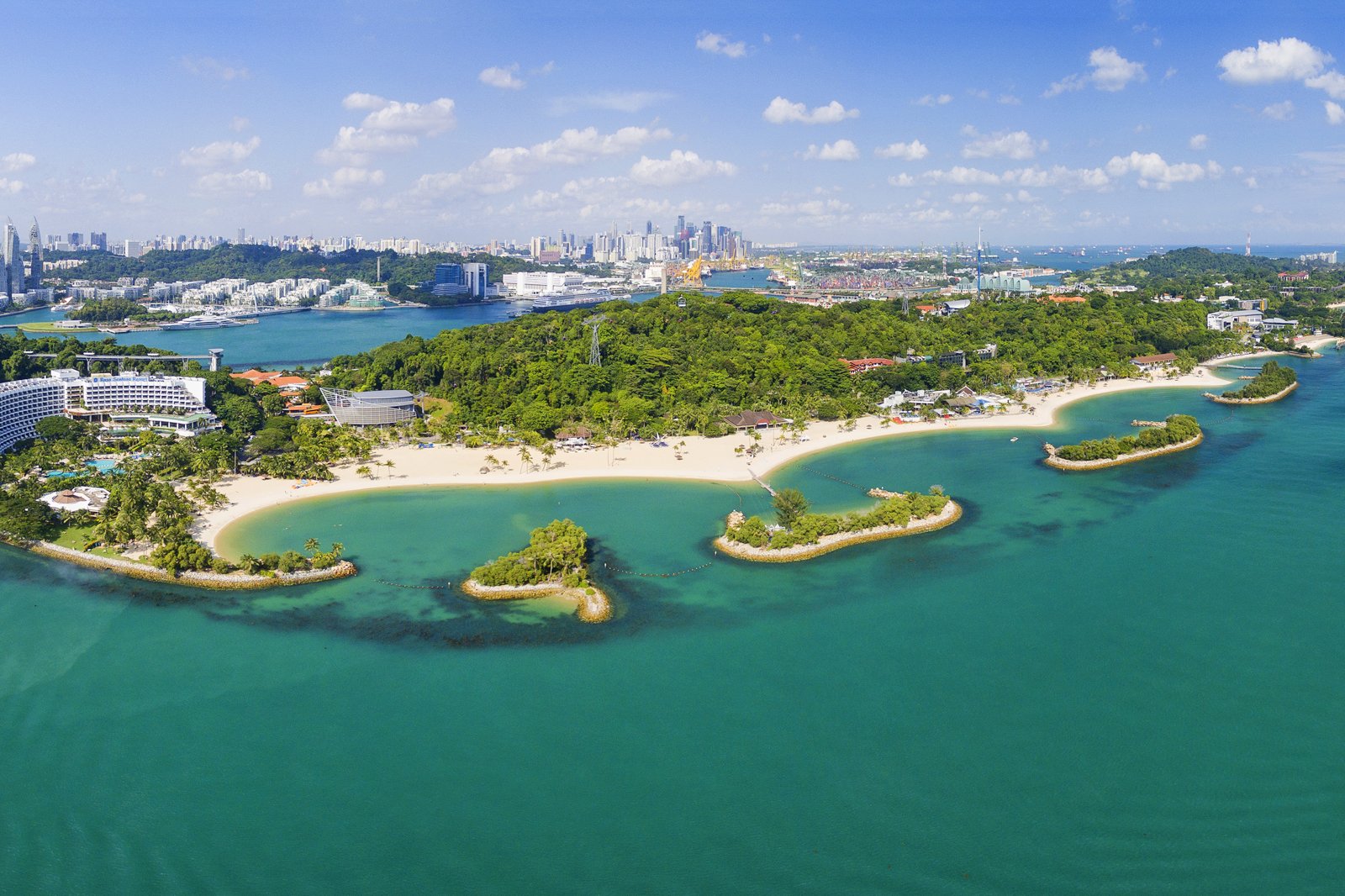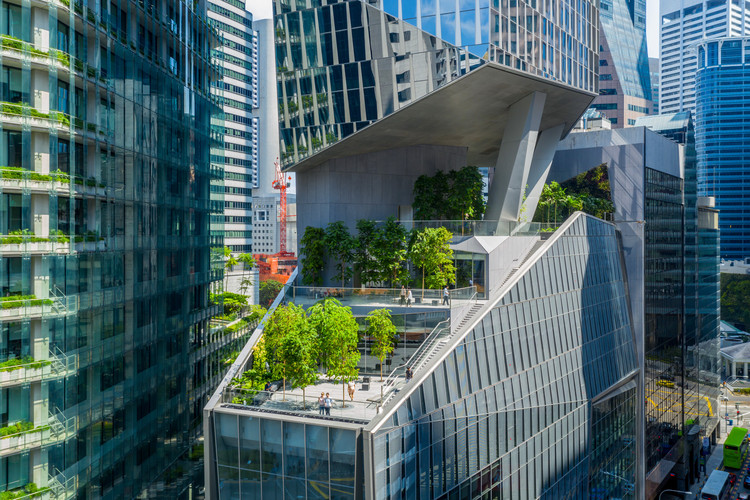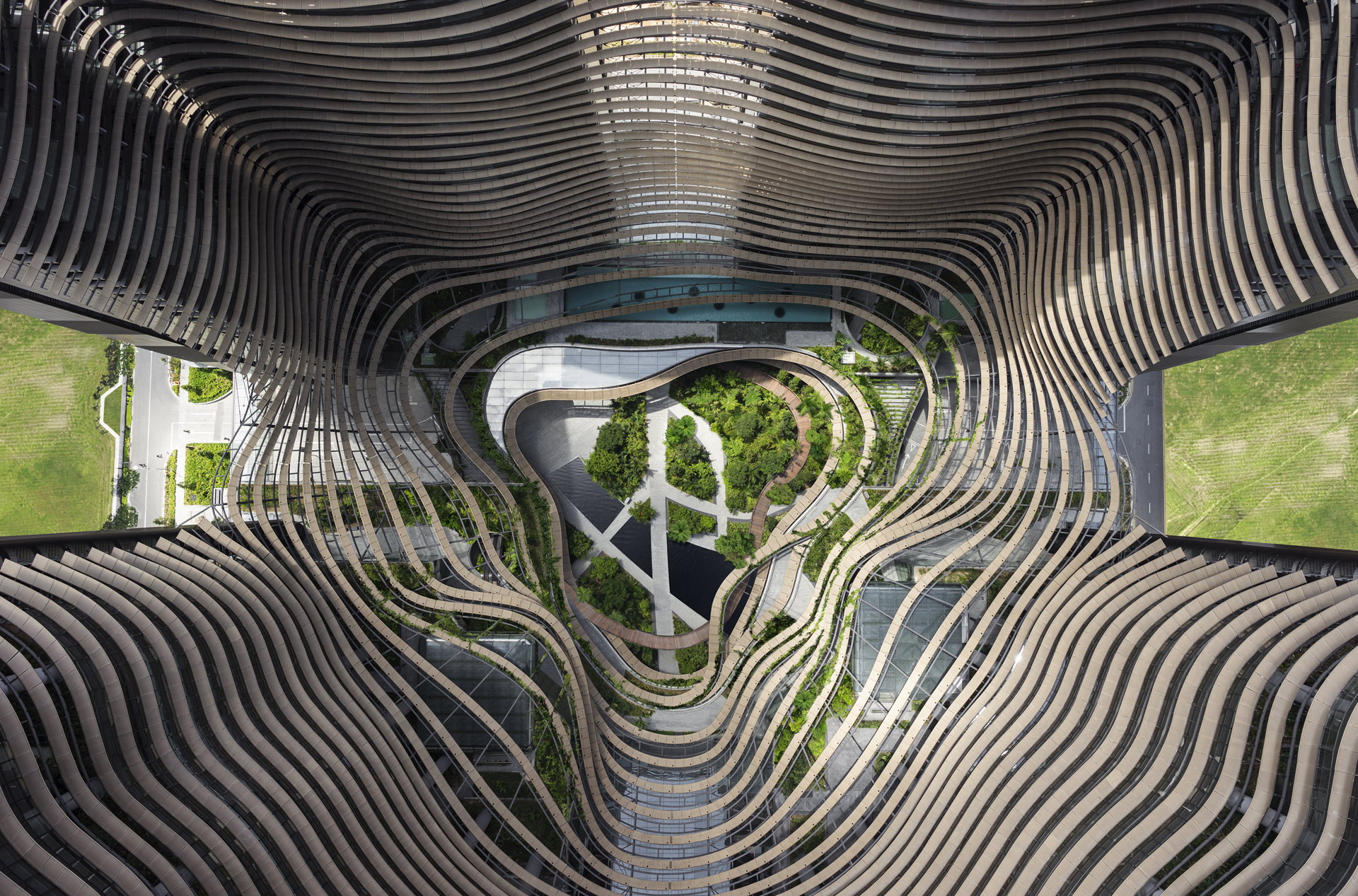Despite its limited area, Singapore is one of the most developed and prosperous countries in the world. A true model of educational and economic success, this Asian El Dorado welcomes many expatriates every year, creating a truly multicultural and plurilingual society.
Most of the new arrives are settled on the large island of Pulau Ujong, where skyscrapers and old neighborhoods meet. From the old alleys of Little India and Chinatown to the futuristic district of Marina Bay, the city-state multiplies the contrasts, which sometimes border on anachronism.
Many Americans choose to settle in Singapore, attracted by a prosperous economy and a truly multicultural society. Despite its limited area, the city-state is one of the most developed and prosperous countries in the world, which has earned it the nickname “country, or city of the future”. From the alleys of Chinatown to the futuristic architecture of Marina Bay through the jungle, Singapore multiplies the contrasts.
If you are thinking of moving to Singapore, you will discover an exceptional quality of life, between luxury shopping malls and lush jungle. Although the island of Pulau Ujong is the densest, Singapore is actually made up of 64 islands that invite exploration. Idyllic beaches, casinos, water parks, industries, the islands of Singapore are also a real melting pot!

What should I do to actually live in Singapore?
A residence permit is required for any stay longer than three months. There are different types of work permits, all subject to a minimum wage:
- Employment permit (P): it can be requested by entrepreneurs or liberal professions, particularly in the fields of administration or management. A P1 or P2 permit is awarded according to salary. The P permit is initially valid for two years, then renewable every three years.
- Employment permit (Q): this type of permit can be requested by workers who can attest to their very specific qualifications (for example a jeweler or a baker).
- Employment permit (S): granted to some workers and technicians.
Also, families of workers who have a P or Q permit must apply for an independent permit. In any case, you will have to go to the Ministry of Social Affairs. There are many formalities, and the queues might be very long.
In practice, many Americans extend their tourist visa for 90 days while waiting to find a job. To do this, you just have to leave the territory for a few hours and then come back. This practice, called “visa-run”, is not officially offered by the authorities but it seems to work for many people. Anyway, our recommendation is to always keep updated about the new legal frames about migration that you might encounter. Note that visa laws change very frequently, and we advise you to consult the information in force at the time of your move to Singapore.
In addition, if you wish to live in Singapore permanently, it is possible to apply for Singaporean nationality in the following situations:
- blood relationship: child of Singaporean parent or naturalized Singaporean
- sustainable establishment in Singapore (permanent resident)
- marriage bond: foreigner married to a Singaporean citizen.
However, you will have to renounce your American nationality because Singapore does not accept dual nationality.
What should I do as soon as I arrive in Singapore?
When arriving in Singapore, it is recommended that you register your arrival at the American embassy in order to facilitate your procedures in the country.
To open a bank account, you will need your passport, a letter from your Singapore employer or work permit, and a statement from your home bank. All banks will also ask you to deposit a minimum amount. You will have no trouble getting a debit card (the NETS card, accepted in shops and ATMs), but some banks refuse credit cards to foreigners.
On the communications side, as in many countries, mobile telephony continues to increase to the detriment of fixed telephony. The main mobile operators are SingTel Mobile, StarHub, and Mobile One. If you still want to open a landline, you can go to one of the branches of the operator of your choice with a passport and proof of address. The main fixed-line provider is SingTel, which offers packages with international calls.
As for the Internet, Singapore has over three million subscribers. You might as well say that you will have no problem finding a connection at competitive rates! If you already have a landline, you will only need your passport. Otherwise, you will also need to provide proof of address. Small peculiarity, the Singapore Internet network is controlled by the Media Development Authority. Access to certain unwanted sites is strictly prohibited.
The cost of living in Singapore
In general, life in Singapore is more expensive than in the US. The good news is that the wages are much higher too! Furthermore, this difference does not apply to all aspects of daily life. For example, calculate only 2% more than in the US for your groceries at the supermarket, except for alcohol which is up to 200% more expensive.
A restaurant meal will cost you less than in the US, and you will pay around $12 for a meal in a cheap restaurant. A meal in a slightly more upscale restaurant will cost you around S $60. In addition, the gastronomic variety offered is incredibly rich. Transport is also a little cheaper than in some American states. A single ticket will cost you $1.80. When it comes to entertainment, you’ll pay around $127 for a monthly gym membership, and $12 for a movie ticket.
Everything is relatively affordable. However, it becomes more difficult when it comes to rents, which are up to 190% higher than in most parts of the US. You will pay an average of $2,834 per month for a one-room apartment in the city center, and $1,906 for the same on the outskirts. A three-room apartment will cost you $5,312 in the city center, and $3,092 on the outskirts. Also, do not forget to consider around $155 more per month for other charges.
Working in Singapore
Singapore’s unemployment rate is 2%. Yes, you read that right! But beware, because many low-skilled jobs are poorly paid, and generally assigned to expatriates from neighboring countries. In contrast, salaries for skilled jobs are generally quite generous. Most Americans living in the country already have an employment contract when they arrive, but some try their luck once there. Singapore’s labor market is very open to expatriates, although some occupations are reserved for Singaporeans (ex: those in the medical sector).
The most dynamic sectors are:
- Manufacturing sector
- Finance
- Information technology
- Biotechnology
- Education
- Restoration
- Tourism
- Petrochemical industry
If you want to work in Singapore, know that we are far from the 40 hours and the Western Unions! In fact, the legal weekly working time is 44 hours, with only fourteen days of vacation per year. Foreigners cannot benefit from unemployment, nor health insurance. Besides, no minimum wage is imposed.
To find a job in Singapore, you can look at newspapers, headhunting firms (highly skilled jobs), temp agencies, consular services, binational chambers of commerce, and of course the internet.
In Singapore, social security does not exist. Social protection (Central Provident Fund), a compulsory individual capitalization system for Singaporeans, is not available to non-permanent resident foreigners. If you move to Singapore, you will need to purchase private or voluntary insurance. The quality of care is excellent in both the public and private sectors, and the price difference is not huge. Despite its small size, Singapore has 8 public hospitals as well as many specialized health centers, private hospitals, and clinics. In fact, patients from all over Asia come to Singapore for treatment. Note that foreign medical prescriptions are not valid.
Studying in Singapore
Recognized internationally for its excellent results, Singapore’s school system is one of the strictest and most difficult in the world. Competition is at the heart of teaching, sometimes putting questionable pressure on young students. Wearing a uniform is compulsory in all establishments. The first language taught at schools is English, followed by a second compulsory language (Chinese, Malay, or Tamil) and later an optional third (French, German or Japanese). The system is organized as follows:
- Pre-school: from three years old
- Primary school: from six years old
- Secondary school: from the age of eleven, ends with the O-level exam
- Junior college: after O-level, ends with the Singapore Cambridge A-level exam.
Expats with a work permit can enroll their children in a public school or a private international school. In addition, Singapore’s universities are internationally recognized and attract students and teachers from all over the world. The main ones are the National University of Singapore, the Nanyang Technological University, or the Singapore Management University.

Driving and housing in Singapore
You can use an international license for one year. Beyond that, you will need to obtain a local driver’s license. After five years of possessing a Singaporean driver’s license, you will be able to obtain a driver’s license valid for life. Even if you already have an American driving license, you will have to pass the aptitude tests in one of the three approved driving schools in order to convert it. Be careful, in Singapore, we drive on the left, and drivers do not always show good citizenship!
Due to the small size of the city-state, the low cost of taxis, and the extensive network of buses and subways, most residents prefer not to drive. In Singapore, space is limited. Add in cohorts of foreigners from all over the world, and you will understand the price hikes! However, the government has put in place measures to curb this trend, both for purchase and rental. There are three main categories of accommodation:
- HDBs: Popular living options at big building all around the city-state, they represent 85% of the housing stock.
Condominiums: private buildings with facilities such as swimming pools, a caretaker, etc. They represent 10% of the market.
Detached houses: due to lack of space, they represent only 5% of the market and are reserved for Singaporeans and wealthy permanent residents. Non-permanent residents are not allowed to purchase them except in the Sentosa Cove neighborhood.
If you are lucky enough to be able to afford real estate, know that the average purchase price per square meter is $25,176 in the city center, and $12,325 on the outskirts.

What to do in Singapore?
Wondering what to do in Singapore? Despite its small size, the country offers many activities. Modern wonders of the city-state include the Gardens By the Bay, Marina Bay Sands, and the Singapore City Gallery. Do not miss the more traditional districts of Chinatown, Kampong Bahru and its shophouses, Haji Lane and Little India. On the nature side, escape to the Botanical Garden, Palau Ubin or the beaches of Sentosa.
One third of the country’s population is of foreign origin. As much to say to you that the expatriates are rather well received, and quickly integrated! If you are homesick, you can easily get in touch with the nearly 26,000 American citizens who have chosen to settle in Singapore. In addition, the city-state has more than 4,200 American companies.
Singapore is considered the best destination for emigrating, according to HSBC Expat Explorer. With a life expectancy of 82.5 years, it is also one of the countries where people live the longest. The country is also recognized internationally for the quality of its education and health care system. Finally, it is the fifth country with the highest cost of living.
Some additional information
Here is essential information to know if you are moving to Singapore.
- Official language: English, Malay, Chinese
- Currency: Singapore dollar
- Time zone: UTC +8
- International dialing code: +65
- Emergency numbers: 999 (police), 995 (fire brigade and ambulance)
- Population: 5,469,700 inhabitants
- Electricity: SP services
- They drive in the left side of the street
- Tip: unusual
- Internet domain: .sg
Other: Singapore is a clean nation. The sale of chewing gum is banned throughout the country. In addition, avoid spitting or throwing rubbish on the ground otherwise you will be fined!


:no_upscale()/cdn.vox-cdn.com/uploads/chorus_image/image/63090484/shutterstock_1037790478.0.jpg)